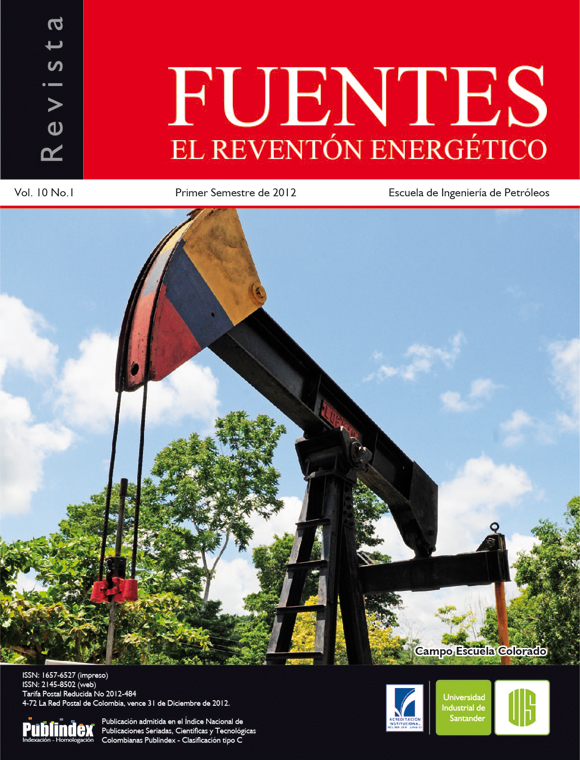APLICACIÓN DE UN TRATAMIENTO QUÍMICO PARA EL CONTROL DE PARAFINAS EN LA TUBERÍA DE PRODUCCIÓN EN EL CRUDO DEL CAMPO ESCUELA COLORADO
Published 2012-06-07
How to Cite
Abstract
RESUMEN
Este estudio muestra la aplicación de un tratamiento químico en un pozo piloto del Campo Colorado con el fn de controlar la precipitación y prevenir la depositación de parafnas en la tubería de producción. Dicho tratamiento fue previamente desarrollado a nivel de laboratorio, donde demostró ser efectivo, logrando reducir el punto de cristalización. El pozo piloto seleccionado fue el Col-75, porque cumplió con una serie de criterios necesarios para un desarrollo exitoso del proyecto. Con base en un diseño experimental, se determinó el número de pruebas que se debían realizar y la infuencia del volumen de tratamiento químico y del tiempo de recirculación sobre el punto de cristalización del crudo. Las distintas aplicaciones del tratamiento se realizaron cada 8 días, tomando muestra de crudo antes y después de cada una para realizar pruebas de laboratorio a fn de evaluar su efectividad. Con los resultados se identifcó que el mejor tratamiento para prevenir la deposición de parafnas dentro de la tubería de producción es el que presenta los niveles más bajos de volumen de tratamiento y tiempo de recirculación, el cual es viable económicamente comparado con los trabajos de limpieza de pozo como método correctivo. Se concluye que el tratamiento se puede hacer extensivo a otros pozos del Campo Colorado, pero se recomienda hacer seguimiento y control para evaluar su efectividad.
Palabras clave: Campo Escuela Colorado, parafnas, precipitación, depositación, punto de cristalización, punto de fuidez, tratamiento químico.
ABSTRACT
This paper presents the implementation of a chemical treatment in a pilot well of the Colorado Field to prevent the precipitation and deposition of paraffns in the production tubing. Such treatment was previously developed in the laboratory, which proved to be effective, thus reducing the crystallization point. Was selected the Col-75 as pilot well, because he met a number of criteria needed for successful development of the project. Based on experimental design, it was determined the number of tests was performed, and the infuence of chemical treatment volume and the recirculation time on the point of crystallization of the crude oil. The different treatment applications were made every eight days, taking crude samples before and after. Those samples were testing in the laboratory in order to evaluate the effectiveness of the chemical treatment. With the results it was found that the best treatment to prevent paraffn deposition inside the production tubing is having the lowest volume of treatment and recirculation time, which is economically viable compared with workover of the well as corrective method. We conclude that treatment can be extended to other wells of the Colorado Field, but it is recommended to monitor and control in order to evaluate its effectiveness.
Keywords: Oil Colorado school feld, wax, precipitation, deposition, cloud point, pour point, chemical treatment.
